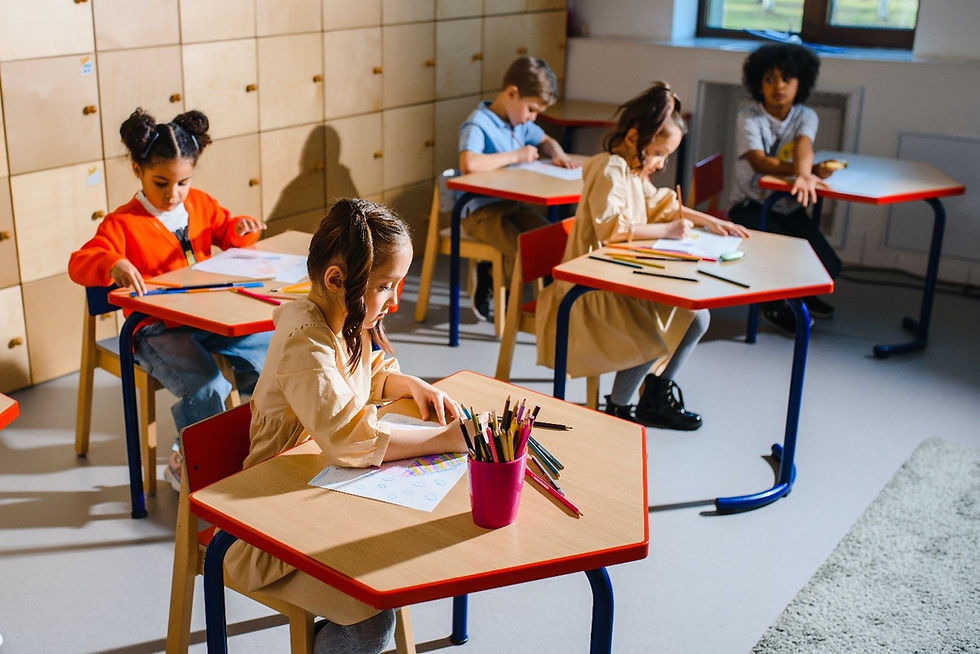The Art of Engaging Students: Interactive Teaching Techniques
- Mariam Rafique
- Jan 28, 2024
- 3 min read

Forget the days of droning lectures and passive note-taking. In today's classrooms, engagement is an art form, and interactive teaching techniques are the brushes that paint vibrant learning experiences. But translating theory into real-world magic can be daunting. How do we make science labs sizzle, history come alive, and math equations jump off the page? Let's dive into some practical, classroom-tested techniques that will ignite your students' curiosity and turn learning into an exhilarating adventure.
1. Gamification: Unleashing the Power of Play
Remember the thrill of completing a level in your favorite game? Gamification leverages that intrinsic motivation to transform learning into a quest. Imagine a history lesson on the French Revolution. Divide students into "revolutionaries" and "royalists" and assign points for research, debate, and persuasive speeches. Let them build virtual barricades and design propaganda posters. Suddenly, dates and names become weapons in an immersive game, fueling engagement and critical thinking.
2. Socratic Seminars: Questioning the Way to Understanding
Banish the one-way street of teacher-to-student knowledge delivery. Instead, unleash the power of questions with Socratic seminars. Choose a thought-provoking text, from Shakespeare's sonnets to a scientific article. Guide students through a structured dialogue, where they question, analyze, and build upon each other's interpretations. Witness the magic as understanding emerges not from pronouncements but from collaborative inquiry.
3. Maker Labs: Learning by Doing, Building, and Sharing
Transform your classroom into a bustling maker's lab. Imagine students designing and building miniaturized ecosystems in shoeboxes, concocting chemical reactions in makeshift laboratories, or coding their video games. Embrace the mess, the tinkering, and the triumphant shouts of "Eureka!" Maker labs cultivate creativity, problem-solving skills, and a spirit of collaboration that transcends textbooks and tests.
4. Escape Rooms: Cracking the Code of Knowledge
Turn your classroom into a thrilling escape room where knowledge is the key to freedom. Craft a scenario – perhaps students are detectives solving a historical mystery or scientists trapped in a simulated ecosystem. Design puzzles, riddles, and challenges that require them to apply their learning, collaborate, and think outside the box. The adrenaline rush and sense of accomplishment as they finally unlock the door become a memory etched in their minds, along with the knowledge they used to escape.
5. Storytelling: Weaving Worlds of Connection
Let go of dry facts and statistics; weave a captivating narrative. Start your math lesson with a real-world problem – calculating the trajectory of a rocket launch, perhaps, or estimating the cost of building a school. In biology, let the lives of pioneering scientists be the backdrop to understanding DNA replication. Storytelling personalizes learning, sparks empathy, and connects abstract concepts and the real world.
Remember, these techniques are just the tip of the iceberg. The key is to embrace your inner artist, experiment, and tailor these strategies to your unique teaching style and the specific needs of your students. Be the facilitator, the guide, and the cheerleader on their learning journey. Create a classroom where collaboration thrives, curiosity reigns, and learning becomes an adventure everyone wants to join.
And above all, remember – your passion is the most powerful tool in your interactive teaching arsenal. Let your enthusiasm for your subject ignite the spark in your students, and watch your classroom become a vibrant stage where the art of engaging students becomes a masterpiece unfolding every day.
The tip of the iceberg! Remember, Books can nudge you outside your comfort zone and encourage you to see the world in new and unexpected ways. I suggest you a book.



Comments